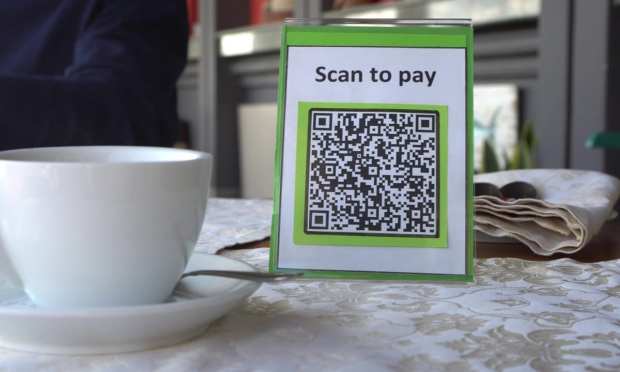The On-Demand Economy Comes for Airport Dining

As consumer mobility continues to increase, businesses are beginning to get a sense of how the changes in consumers’ habits and expectations are impacting every aspect of their life. Take, for instance, diners’ anticipation of on-demand convenience from their food orders.
As travelers return to the airport, they may no longer be satisfied with the friction of walking to a food kiosk, placing their order, waiting for their food to be ready and taking the food back to their seat, especially when it means risking a seat at the gate and dragging heavy luggage there and back.
“During the pandemic, people have been more and more starting to adopt the street-side food ordering purveyors — the DoorDashes, the Uber Eats, the Grubhubs of the world,” Chris Hartman, co-founder and chief experience officer at in-airport ordering and delivery service AtYourGate, told PYMNTS in an interview. “We really believe that as customers have begun to return to air travel, and all indications are that they will continue to do so as we move into 2022, we think they’re going to bring those habits with them.”
Sure enough, research from PYMNTS’ report “The Bring-It-to-Me Economy,” created in collaboration with Carat from Fiserv, finds that consumers are ordering online more than ever, and the demand for delivery has risen enormously. Fifty-eight percent of the more than 5,200 consumers surveyed reported that they are ordering restaurant-made food online more often than they were before March 2020, and 61% of consumers are now ordering restaurant food online. Additionally, 48% of consumers are buying food from a restaurant’s website and having it delivered to them “somewhat” or “much” more than before March 2020, and 46% are ordering food from restaurants using aggregator services more often.
More details: Bring-It-to-Me Economy Ascends as Consumers Embrace Home-Centric Lifestyles
With airport travel coming back, SSP Group, which operates foodservice sites in airports and railway stations in 35 countries, recently announced that its revenues for the previous week were about 53% of 2019 levels, as the opportunity to target these pandemic-changed travelers is growing.
See also: Owner of Airport Eateries Sees Revenue Surge to 53% of Pre-Pandemic Levels
Goers and Stayers
The company’s customer base comprises both airports’ travelers and their employees. For the former, AtYourGate announced the launch of the “first-ever digital airport meal vouchers” earlier this month. With the program, the company allows airlines to integrate the delivery service into their meal voucher programs for travelers experiencing flight delays or cancellations.
“We’ve brought that experience into the digital world,” said Hartman, adding that while consumers can still order at the restaurant, the program adds the option to order digitally for delivery.
He noted that typically, when AtYourGate first comes to an airport, employees make up the bulk of the customer base, since they have more frequent exposure to the delivery service. Over time, however, the mix shifts from “a 60/40 or 70/30 split in favor of employees” to “almost a mirror image” as more travelers adopt the service.
Part of the way that the company drives this adoption in airports, converting in-person travelers to digital customers, is through the use of QR codes on physical materials. “[When] you’re trying to drive folks into a digital experience, sometimes using traditional or physical assets — things like signs or flyers — the QR code becomes a very valuable tool,” he explained.
A Multi-Angle Approach to Loyalty
Now, AtYourGate is looking at ways to both offer its service as a loyalty reward for credit card customers and to offer its own customers rewards for engaging with the service.
“There’s a travel component to credit cards, where credit card user bases are traveling, and we are working on programs with them, where there is a particular value-add to their cardmembers once they enter the airport,” Hartman said, declining to name specific companies. However, he noted that could take the form of perks for cardholders in a travel lounge, or deals and discounts for card members within AtYourGate’s digital platform.
In fact, enhancing traveling experiences is one of the top ways that consumers want to be rewarded. A report highlighted in PYMNTS’ Disbursements Tracker, created in collaboration with Ingo Money, found that 63% of American Express cardholders were hoarding their card points specifically to spend them on upcoming trips.
Related news: Instant Rewards – the Ticket to Lasting Consumer Loyalty?
Additionally, the company is also looking into ways to use rewards to incentivize more frequent orders from all consumers. PYMNTS’ 2021 Restaurant Readiness Index, created in collaboration with Paytronix, finds that loyalty programs are the No. 1 feature that would make restaurant customers inclined to spend more on food orders, ahead of the ability to order online, pay online, order through a mobile app or pick up orders without standing in line.
You may also like: QSRs’ Lagging Loyalty-Reward Investment Hurts Innovation and Sales
The Connected Future of Airport Dining
Hartman predicts that additional innovations from the digital ordering boom will continue to become more common in airports, in the form of digital menus, contactless payment technologies, self-serve kiosks, own-device ordering and more.
Additionally, Hartman expects that some of the trends shaping out-of-airport restaurants’ physical spaces will also make their way inside, with ghost kitchens and other models designed with consideration for the prevalence of off-premise ordering becoming more popular.
As he reflected: “Those are trends that we haven’t seen a lot of yet inside the airport, but we think there’s some interest there, and we’re very excited to see how that develops.”
